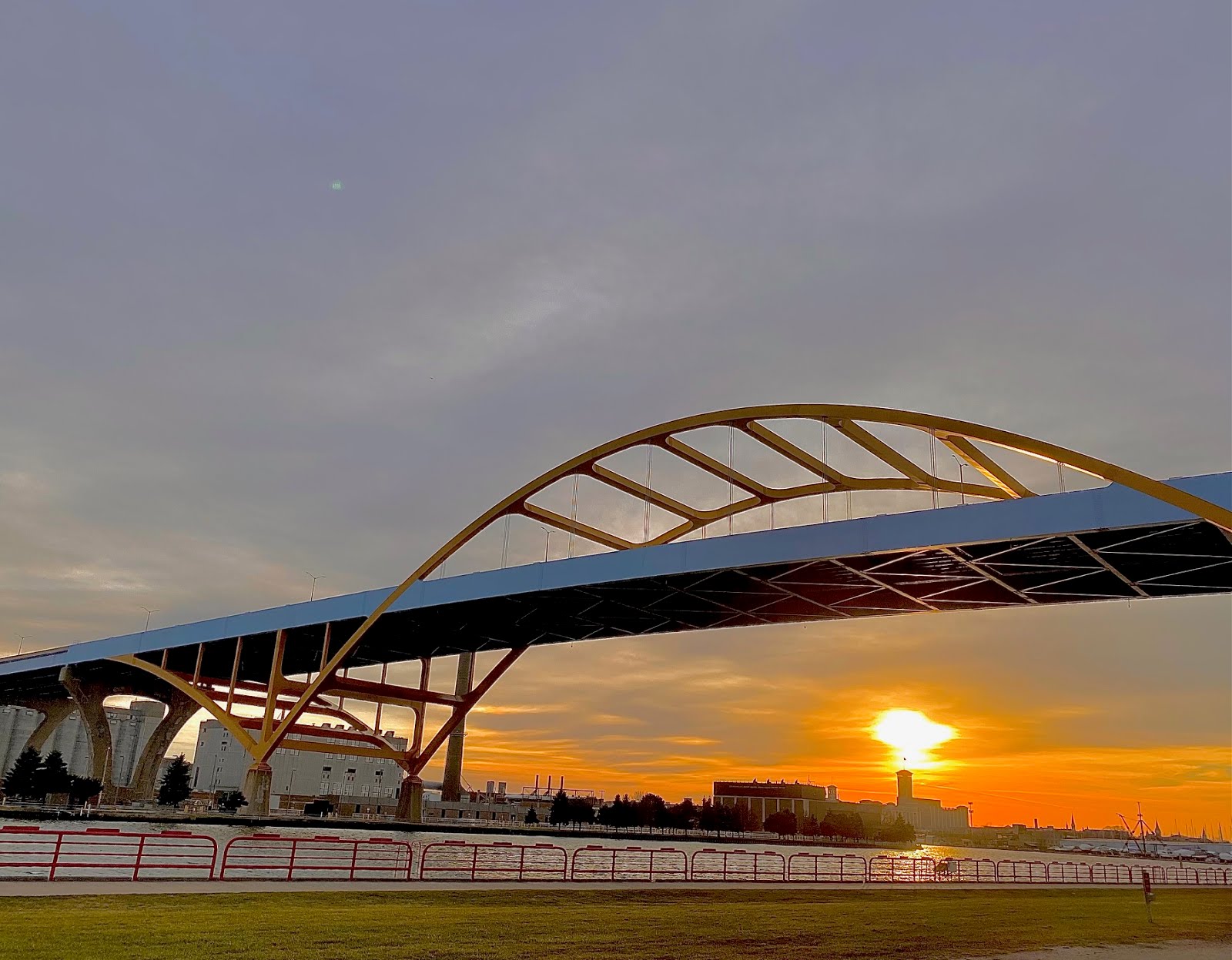How a bridge led to development in Milwaukee
I appreciate Tom Daykin's big-picture look at the continuing burst of development, including housing, on the near South side associated with water research and technology investments.
The photo accompanying the story shows the award-winning Sixth Street Bridge - - so beautiful that I once had to redirect some tourists on Wisconsin Ave. away from it because they thought they thought they were heading for the Calatrava Art Museum pedestrian bridge.
The old Sixth Street Viaduct which the bridge replaced was a flat, single-purpose interstate-highway style concrete span built to move commuters above the Menomonee River Valley; the new bridge, designed at the insistence of then-Milwaukee Mayor John Norquist (I was in the meetings) over the objections of the Thompson administration and its DOT at the time.
Norquist wanted a more functional, urban-friendly bridge that came down gracefully to the Valley floor, thus opening the land and water there to greater access and development - - results visible now at the popular, commerce-generating destinations, including the Harley-Davidson Museum at Canal Street, then west past the Potawatomi complex, the Menomonee Valley Partners' multiple business and park initiatives - - a national model - - all the way paralleling the Henry Aaron State Trail to a final connection at Miller Park.
The long-delayed Milwaukee streetcar project should similar public and private-sector payoff.
I have been telling the story of the bridge since 2008, but it's a story still ignored by state planners fixed on highway expansion at the expense of city land, and the needs of pedestrians, bike riders and train passengers:
The photo accompanying the story shows the award-winning Sixth Street Bridge - - so beautiful that I once had to redirect some tourists on Wisconsin Ave. away from it because they thought they thought they were heading for the Calatrava Art Museum pedestrian bridge.
The old Sixth Street Viaduct which the bridge replaced was a flat, single-purpose interstate-highway style concrete span built to move commuters above the Menomonee River Valley; the new bridge, designed at the insistence of then-Milwaukee Mayor John Norquist (I was in the meetings) over the objections of the Thompson administration and its DOT at the time.
Norquist wanted a more functional, urban-friendly bridge that came down gracefully to the Valley floor, thus opening the land and water there to greater access and development - - results visible now at the popular, commerce-generating destinations, including the Harley-Davidson Museum at Canal Street, then west past the Potawatomi complex, the Menomonee Valley Partners' multiple business and park initiatives - - a national model - - all the way paralleling the Henry Aaron State Trail to a final connection at Miller Park.
The long-delayed Milwaukee streetcar project should similar public and private-sector payoff.
I have been telling the story of the bridge since 2008, but it's a story still ignored by state planners fixed on highway expansion at the expense of city land, and the needs of pedestrians, bike riders and train passengers:
...Norquist prevailed, and the new bridge has won awards for its striking appearance.
It also set off development in the newly, more-accessible Valley, and gave Harley-Davidson the option to locate its museum there.
The struggle with the state and the eventual happy outcome proved that cities are more than land to be spanned.
Get yourself onto the streets where there is commerce and culture. State road-planning shouldn't obstruct that essential definition of what a city is all about.
And public structures can be functional and beautiful. There needn't be a contradiction there.









No comments:
Post a Comment